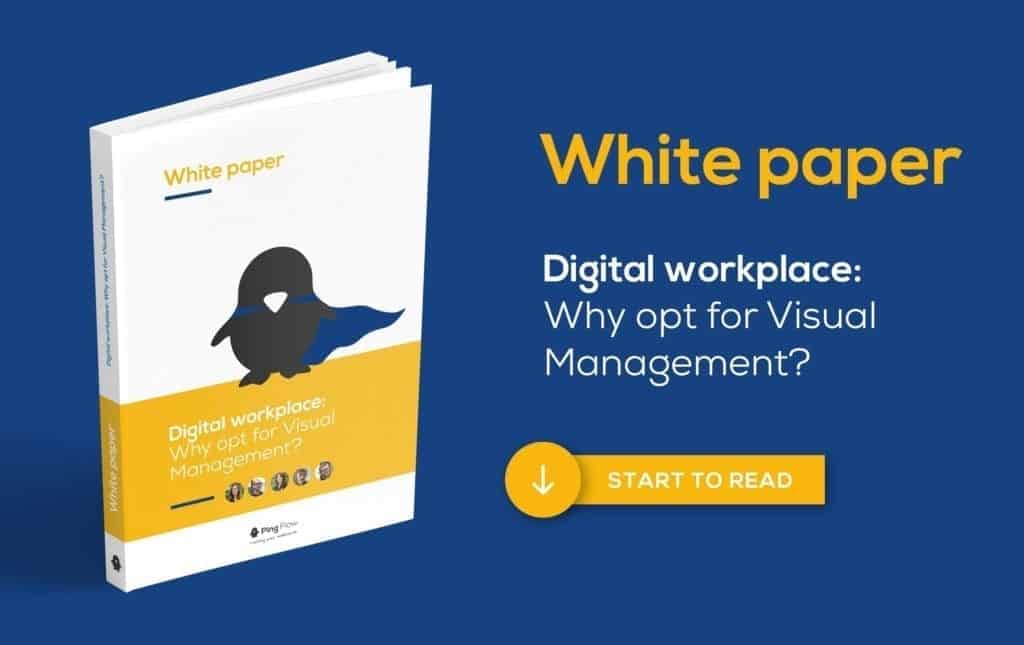In this era of digital transformation, the new mission of top management is to transform current organisations into digital workplaces. Even if the concept is not new, it is far from reality in most companies. However, several factors contribute to the creation of today’s digital workplaces. Zoom in on one of the key components: Visual management.
The digital workplace, birthplace of digital superpowers
Big groups are looking to the significant positive effects of their office space design to make their workplaces more open to innovation. The practices of start-ups has significantly influenced this approach. Workplaces have therefore become more open, without partition walls, more connected and more comfortable. Comfortable work areas equipped with sofas and armchairs have replaced traditional office spaces. Amusements such as table football have now been installed in companies, thus offering entertaining breaks for staff.
These types of reorganisation have a common goal: Develop the agility of employees. The focus is on teamwork and the spirit of innovation. The focus on the human factor has inevitably bred a new style of management. The role of middle manager itself has been highly impacted. Middle managers are now more coaches rather than intermediaries between top management and employees.
But companies can go further: By digitising communal areas, they can create environments which foster collaboration and co-creation: This is the arrival of the digital workplace.
At the heart of this strategy lies a new type of job: The Information Systems Director or ISD. In talking about the digital workplace, one
often hears about the separation between IT and the business areas. IT is the favoured medium for the digital revolution. The image of IT being a diversion is evolving to it being a driver for the digital workspace and for business areas.
Visual management: The hero of the digital workplace

These informal discussions can produce some of the best ideas. All employees have original ideas to innovate and improve their daily tasks. While managers organise meetings, operational staff innovate and work together spontaneously based on performance indicators.
One of the key aspects of the digital workplace remains … computers. Most Visual Management is still on paper, but players such as PingFlow are now trying to digitalise it. Post-its on a whiteboard are very visual and lead to creative ideas, but they are fairly limited and out of phase with real-time working. And visual paper displays mean that employees write the results of their indicators themselves, which is not a perennial process for many reasons: Apathy, lack of time, deliberately forgetting poor numbers, turning off from a display which does not vary often…
Should we then forget Visual Management? Not in view of the improved innovation, productivity and collaboration that it brings. But today it needs to be digitised.




